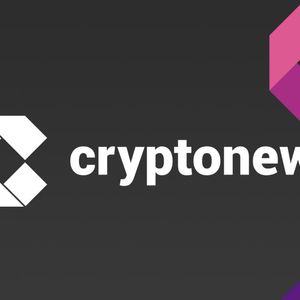Hong Kong Stablecoin Ordinance: Pioneering a New Era of Digital Asset Regulation
9 min read
BitcoinWorld Hong Kong Stablecoin Ordinance: Pioneering a New Era of Digital Asset Regulation The world of digital finance is witnessing a transformative shift, and Hong Kong is at its forefront. The recent implementation of the Hong Kong Stablecoin Ordinance marks a pivotal moment, signaling a robust commitment to regulating the burgeoning stablecoin market. This move by the Hong Kong Monetary Authority (HKMA) is a strategic step towards fostering a secure, transparent, and innovative digital asset ecosystem. For anyone invested in the future of cryptocurrency, understanding this ordinance is crucial for navigating the evolving landscape. What Exactly is the Hong Kong Stablecoin Ordinance and Why Does it Matter? A stablecoin is a type of cryptocurrency designed to minimize price volatility, typically by pegging its value to a stable asset like a fiat currency. The Hong Kong Stablecoin Ordinance is a comprehensive regulatory framework introduced by the HKMA to govern stablecoin issuance and operation within its jurisdiction. This framework is vital for: Investor Protection: Safeguarding users from risks like de-pegging or inadequate reserves, which have previously impacted stablecoin markets. Market Integrity: Preventing manipulation and ensuring fair trading practices within the digital asset space. Combating Illicit Activities: Implementing strict Anti-Money Laundering (AML) and Counter-Terrorist Financing (CTF) measures to enhance financial security. Fostering Innovation: Providing a clear, regulated environment for legitimate stablecoin projects to thrive and attract institutional adoption. Global Stature: Solidifying Hong Kong’s position as a leading international financial center, adapting to and embracing financial technology responsibly. Navigating the 6-Month Transition: What Should Stablecoin Issuers in Hong Kong Expect? The HKMA has introduced a six-month transitional arrangement, commencing this Friday, following the enforcement of the Hong Kong Stablecoin Ordinance . This period is crucial for existing stablecoin issuers to adapt their operations and seek formal authorization. As reported by JinSe Finance, the HKMA’s approach is pragmatic, yet firm, ensuring an orderly transition. Temporary Licenses: The HKMA may issue temporary licenses to existing stablecoin issuers who demonstrate a clear ability and commitment to meet the new regulatory requirements. This allows them to continue operations while their full license applications are processed. Three-Month Compliance Window: Issuers who receive a temporary license are expected to demonstrate significant progress towards full compliance within the first three months of the transition period. This includes submitting comprehensive applications and aligning their operational, financial, and governance structures. Four-Month Wind-Down Period: If an issuer fails to demonstrate compliance within the initial three months, they will be required to commence winding down their operations in Hong Kong over the subsequent four months. This ensures a controlled exit from the market, minimizing disruption. One-Month Cease Operations: Should an application for a full license be outright rejected, the issuer must cease all operations in Hong Kong within one month of receiving the notification. This strict timeline underscores the HKMA’s commitment to swift enforcement for non-compliant entities. This phased approach provides a clear roadmap, but emphasizes the urgency for stablecoin issuers to act decisively and engage with the new framework. Are You Ready? Navigating Compliance Under the Hong Kong Stablecoin Ordinance For stablecoin issuers, the new ordinance presents a significant shift, demanding rigorous adherence to a new regulatory paradigm. Meeting the demands of the Hong Kong Stablecoin Ordinance requires a multi-faceted approach, touching upon legal, operational, and technological aspects. Robust Reserve Management: Issuers will likely need to hold high-quality, liquid assets backing their stablecoins, with regular, independent attestations or audits to prove reserves and ensure transparency. Anti-Money Laundering (AML) & Know Your Customer (KYC) Protocols: Strict procedures for identifying and verifying customers, continuously monitoring transactions for suspicious activities, and reporting to relevant authorities will be mandatory. Cybersecurity & Operational Resilience: Issuers must implement strong cybersecurity measures to protect user funds and data, along with robust operational frameworks to ensure continuous service and effective disaster recovery. Governance & Risk Management: Establishing clear governance structures, internal controls, and comprehensive enterprise-wide risk management frameworks will be essential to ensure sound and responsible operations. Consumer Protection: Measures to protect consumers, including clear disclosure of terms, transparent fee structures, efficient complaint handling mechanisms, and fair treatment of customers, will be a significant focus. The three-month deadline for demonstrating compliance is a tight window, demanding immediate action. Issuers must engage with legal and compliance experts, conduct thorough gap analyses of their current operations against the new requirements, and be prepared to make significant adjustments to their business models. The Strategic Benefits: Why is This Hong Kong Stablecoin Ordinance a Game Changer? While compliance might seem daunting, the proactive regulation of stablecoins, particularly by a major financial hub like Hong Kong, offers profound strategic benefits that extend beyond mere legal adherence. The Hong Kong Stablecoin Ordinance is designed not just to mitigate risks, but also to unlock new opportunities and solidify the region’s role in the future of finance. Enhanced Investor Confidence: A regulated environment provides a stamp of legitimacy. Investors, both retail and institutional, are more likely to trust and utilize stablecoins when they know there are robust safeguards in place, reducing the fear of scams or collapses. Facilitating Institutional Adoption: Major financial institutions and corporations often shy away from unregulated markets due to reputational and compliance risks. Clear regulatory frameworks open the door for banks, asset managers, and payment providers to integrate stablecoins into their offerings, driving significant liquidity and innovation. Promoting Financial Stability: By ensuring stablecoins are adequately backed and transparently managed, the ordinance reduces systemic risks to the broader financial system, preventing a potential ‘run on the bank’ scenario for digital assets. Combating Financial Crime: Robust AML/CTF measures embedded in the ordinance make stablecoins less attractive for illicit activities, enhancing the integrity of the digital asset ecosystem and aligning it with global financial crime fighting efforts. Strengthening Hong Kong’s Position: By being an early mover in comprehensive stablecoin regulation, Hong Kong reinforces its reputation as a forward-thinking international financial center, attracting legitimate crypto businesses and talent. This strategic foresight positions the city as a leader in the evolving digital economy. What Challenges Might Stablecoin Issuers Encounter Under the New Hong Kong Stablecoin Ordinance? While the long-term benefits of regulation are clear, the path to compliance is not without its hurdles. Stablecoin issuers operating or planning to operate in Hong Kong will inevitably face a series of challenges as they adapt to the stringent requirements of the Hong Kong Stablecoin Ordinance . High Compliance Costs: Implementing robust AML/KYC systems, conducting regular audits of reserves, upgrading cybersecurity infrastructure, and hiring specialized compliance personnel can be significantly expensive, especially for smaller issuers. Operational Adjustments: Existing business models may need fundamental restructuring to align with the new regulatory mandates. This could involve significant changes to treasury management, customer onboarding processes, and reporting mechanisms. Balancing Innovation with Regulation: Striking the right balance between fostering technological innovation and adhering to strict regulatory requirements can be tricky. Overly prescriptive rules might inadvertently stifle new developments, while overly lax ones invite risk. Data Privacy Concerns: Enhanced data collection for KYC/AML purposes must be carefully balanced with user privacy concerns and compliance with global data protection regulations, creating a complex legal landscape. Competitive Landscape: The increased compliance burden might lead to market consolidation, where smaller, less capitalized issuers struggle to compete with larger entities that can more easily absorb compliance costs. Some might choose to exit the Hong Kong market entirely. Global Regulatory Harmonization: Stablecoins operate globally, but regulations are often national or regional. Issuers operating across multiple jurisdictions will face the complex task of navigating a patchwork of differing rules, potentially leading to regulatory arbitrage or increased operational complexity. Successfully navigating these challenges will require strategic planning, significant investment, and a deep understanding of both regulatory expectations and technological capabilities. Actionable Insights for Thriving Under the Hong Kong Stablecoin Ordinance Given the impending enforcement and the tight transition timelines, stablecoin issuers must adopt a proactive and strategic approach to ensure continued operation and success under the new Hong Kong Stablecoin Ordinance . Here are some actionable insights to consider: Engage Proactively with HKMA: Don’t wait until the last minute. Seek clarification on ambiguous points, demonstrate your commitment to compliance, and maintain open lines of communication with the regulatory body. Conduct a Comprehensive Gap Analysis: Thoroughly assess your current operations, policies, and systems against every requirement outlined in the ordinance. Identify areas of non-compliance and prioritize them for remediation. Seek Expert Legal and Compliance Counsel: The regulatory landscape is complex. Partner with law firms and compliance consultants specializing in digital assets and Hong Kong financial regulations. Their expertise will be invaluable in interpreting the rules and guiding your implementation. Prioritize Transparency and Robust Risk Management: Beyond meeting the minimum requirements, aim for best practices in transparency regarding your stablecoin reserves and implement a comprehensive enterprise-wide risk management framework. This builds trust and resilience. Invest in Technology and Talent: Ensure your technological infrastructure can support the new reporting, monitoring, and security requirements. Recruit or upskill your team with the necessary compliance, cybersecurity, and regulatory expertise. Develop a Clear Wind-Down Plan (Even if Not Needed): Being prepared for all scenarios, including a potential wind-down, demonstrates responsible planning and can facilitate an orderly exit if compliance proves unfeasible. By embracing these insights, stablecoin issuers can not only meet the regulatory challenge but also emerge stronger, more resilient, and better positioned for long-term growth in Hong Kong’s evolving digital finance landscape. The implementation of the Hong Kong Stablecoin Ordinance marks a watershed moment for digital asset regulation, not just in Asia, but globally. It underscores Hong Kong’s commitment to fostering a responsible and innovative financial ecosystem. While the transition period will undoubtedly present challenges for existing stablecoin issuers, the long-term benefits of a clear, robust regulatory framework are immense. This move promises to enhance investor confidence, attract institutional capital, and solidify Hong Kong’s position as a leading hub for the future of finance, where innovation thrives within a secure and transparent environment. The world is watching as Hong Kong sets a new standard for stablecoin oversight. Frequently Asked Questions (FAQs) 1. What is the Hong Kong Stablecoin Ordinance? The Hong Kong Stablecoin Ordinance is a new comprehensive regulatory framework introduced by the Hong Kong Monetary Authority (HKMA) to govern the issuance and operation of stablecoins within Hong Kong, aiming to ensure market stability, investor protection, and combat financial crime. 2. How long is the transition period for stablecoin issuers under this new ordinance? The HKMA has set a six-month transitional arrangement following the ordinance’s enforcement. Existing stablecoin issuers may be granted temporary licenses, but must demonstrate compliance progress within three months to avoid winding down operations. 3. What happens if a stablecoin issuer fails to comply with the new regulations? Issuers failing to demonstrate compliance within three months may be required to wind down operations over the subsequent four months. If an application for a full license is rejected, the issuer must cease operations in Hong Kong within one month of notification. 4. Why is Hong Kong regulating stablecoins now? Hong Kong is regulating stablecoins to enhance investor protection, maintain market integrity, prevent illicit financial activities, reduce systemic risks, and reinforce its position as a leading international financial hub in the digital asset space. 5. Will this regulation stifle innovation in the stablecoin market? While compliance introduces costs and operational adjustments, a well-structured regulatory environment like the Hong Kong Stablecoin Ordinance is generally seen as fostering sustainable innovation by building trust, attracting institutional investment, and providing a clear framework for legitimate projects to thrive. 6. What are the key requirements for stablecoin issuers under the new ordinance? Key requirements are expected to include robust reserve management (e.g., high-quality, liquid assets), strict Anti-Money Laundering (AML) and Know Your Customer (KYC) protocols, strong cybersecurity measures, sound governance, and comprehensive consumer protection mechanisms. Found this article insightful? Share it with your network and help spread awareness about the evolving regulatory landscape for stablecoins! Your insights can spark important conversations in the crypto community. To learn more about the latest crypto market trends, explore our article on key developments shaping digital asset institutional adoption . This post Hong Kong Stablecoin Ordinance: Pioneering a New Era of Digital Asset Regulation first appeared on BitcoinWorld and is written by Editorial Team

Source: Bitcoin World



